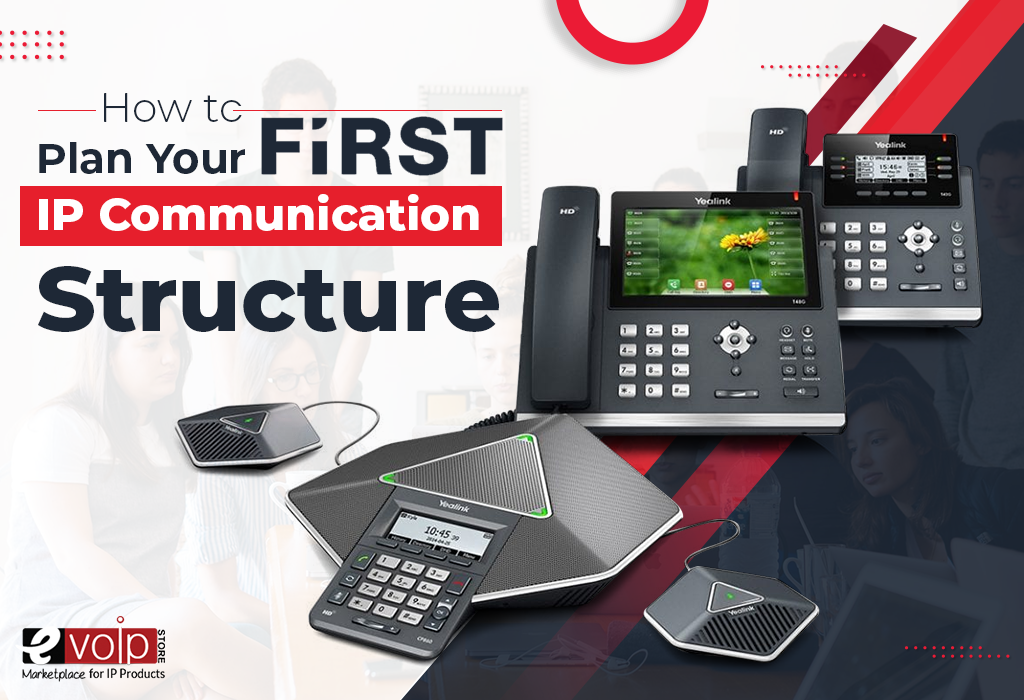How to Plan Your First IP Communication Structure

So you’ve done your research and are ready to install an IP communication solution. Even if you are installing it for your own organisation or looking to step into the installation venture, it is cynical to get into any tech deployment with a plan and a structure. Obstacles during a deployment almost every time come from a lack of vision and detail during the stage of planning. Whether it is the first time of your deployment or one hundredth, following a particular set of steps will help in making sure you structure the flawless deployment on the first attempt.
Steps to be followed during the deployment:
Step 1: Identifying the Needs
Begin by learning how the organisation collaborates and communicates. For instance, who they are communicating with, how frequently they communicate, and how they work together. This helps in identifying the proportion of the deployment and the definite communication needs and choose the optimal IP PBX phone system, hosted solution or cloud service. Details such as forecasted call-volume, audio and video conferencing necessities, call centre capabilities and regular call-transfers will help in deciding on the accurate on-site or hosted IP PBX for the job. This will also benefit from deciding on the standard endpoints the organisation will require.
Next step is to learn about their ability, how vast it is, potential security requirements and where employees work from within the facilities. Let us assume that if mobility is an essential tool, Wi-Fi access points will be required to ease this kind of workspace. Security is another important topic that will be acquired from this. For a structure that needs to diminish access to particular areas, facility access systems are an excellent tool for development.
For another instance, the organisation might need the capability to make both facility-wide and area-specific declarations, something that calls for IP speakers or intercoms.
Step 2: Structure Out the Needs of the Users
Once you have understood an ample amount of information about how the organisation communicates and understood about their facility, structure on that by developing the requirements of the user. The first action is to abstract users into different categories and starts structuring each category's requirements for communicating. For instance, a warehouse of distribution may have reception, sales and floor staff categories.
Step 3: Elect Devices That Meet the Requirements of Business, Facility and Users
The concluding step is to assemble the needs of an organisation, requirements of users and facility notes and set up a solution of hardware and endpoints. Usually, we discover its best to begin with choosing devices that build out the facility and organisation communication requires before choosing user endpoints. Those needs of the organisation will assist you in creating a basic structure so that the user devices cannot only meet the requirements of the user but also help in the organisation's broader security, collaboration and mobility needs. Lastly, attentively consider every user-category and choose two potential devices that would meet or exceed all the needs.
Compiling and working through all these details make take an ample amount of patience, but it will drastically cut down the time it takes to implement the solution while raising the satisfaction and lifespan of the solution as well. Once these steps are followed, one will be able to be well on their way to a successful deployment.
Importance of IP PBX Phone System:
Successful ventures are always looking for creative ways to do more with less; functioning their organisations flexible, innovative and competitive to save the top slot in the market with the help of IP PBX Phone System. It assists users in communicating over internet calls instead of using phone systems or mobile phones which depend on cellular network.
IP PBX Phone system also offers essential solutions to suit the venture needs of distinct segments like hospitality, real estate, legal, manufacturing, automobile, retail infrastructure, IT BPOs, KPOs, healthcare, education, defence and government, to name a few.
Contribution of Business VoIP Providers in The Global Economy:
Installing a local presence such as business VoIP helps in making it easy with the communication.
Business VoIP providers are available across the globe. The services are accessible in more than 65 markets that together make up 93 per cent of the global economy.
Whether it be video, voice and web conferences, fax, email, or instant messaging, IP Communication solutions brings together all the modes of communication in a single user interface. IP Communication solutions can be defined as a tool where voice travels across the same network and in the same data-base. It is a network that uses Internet Protocol in order to send and receive messages between one or more systems.
